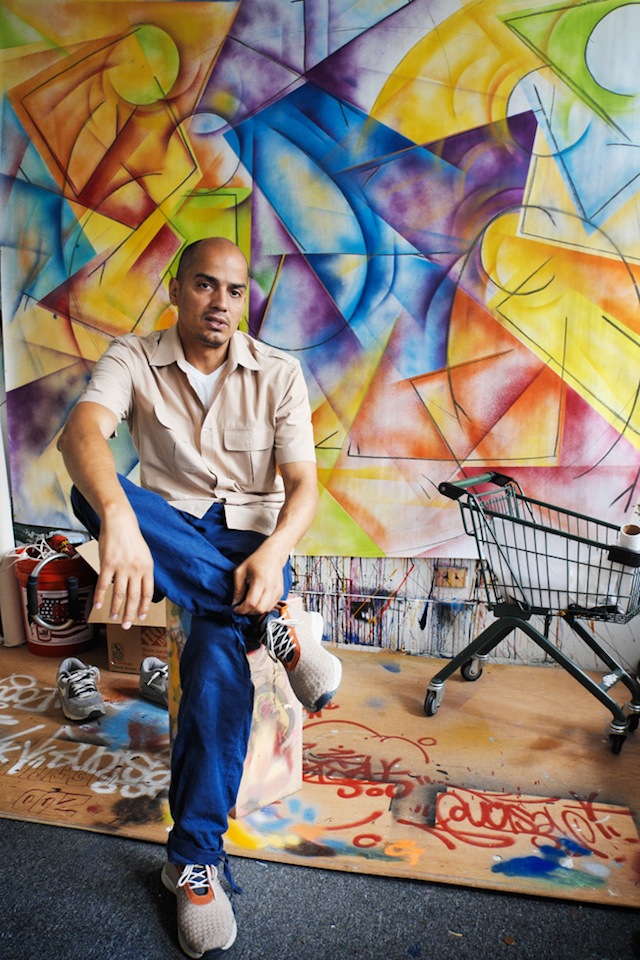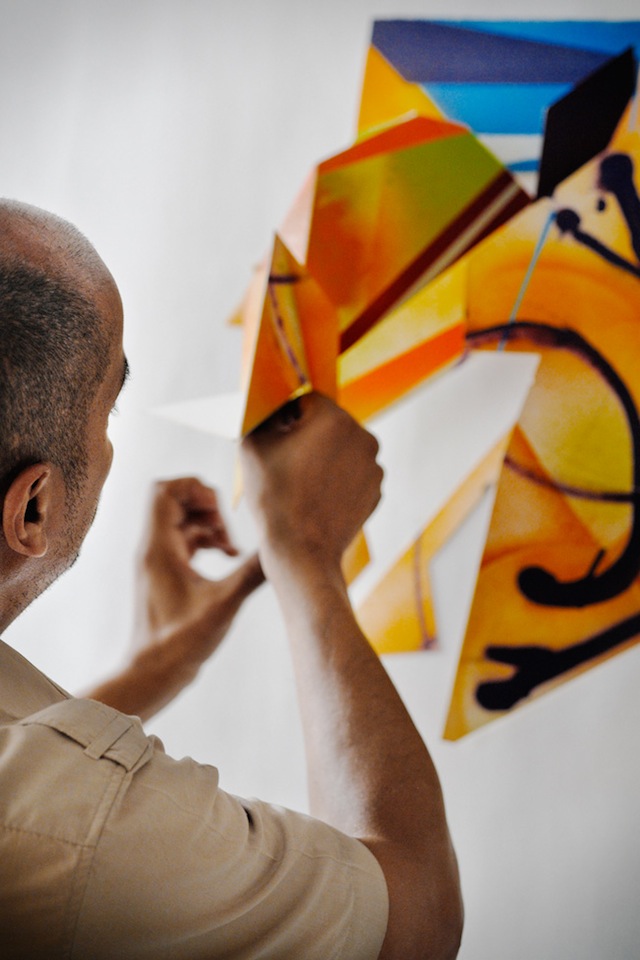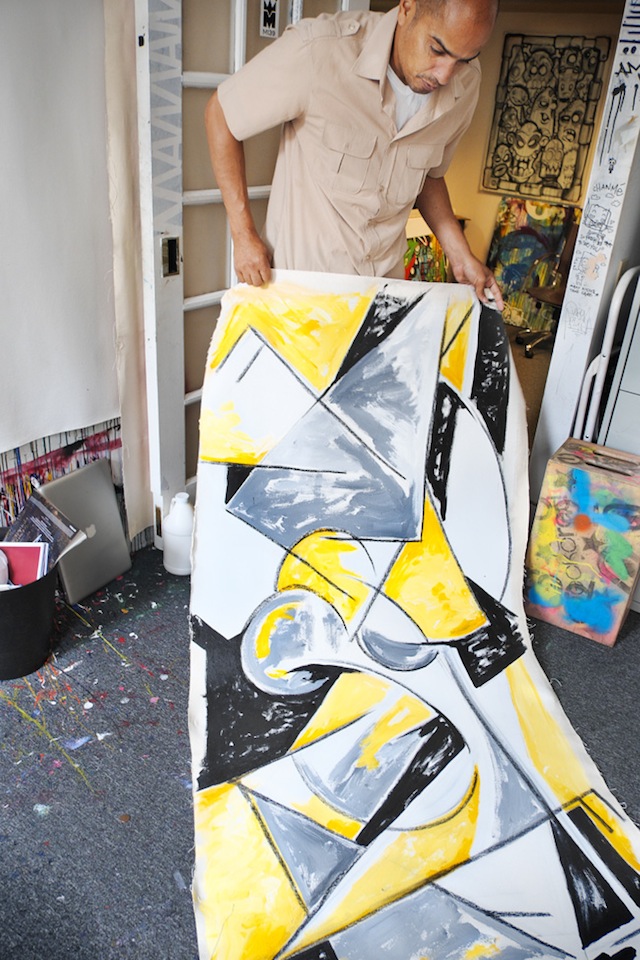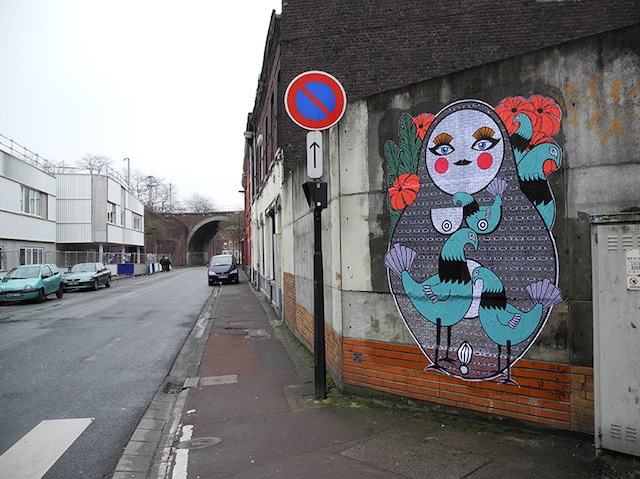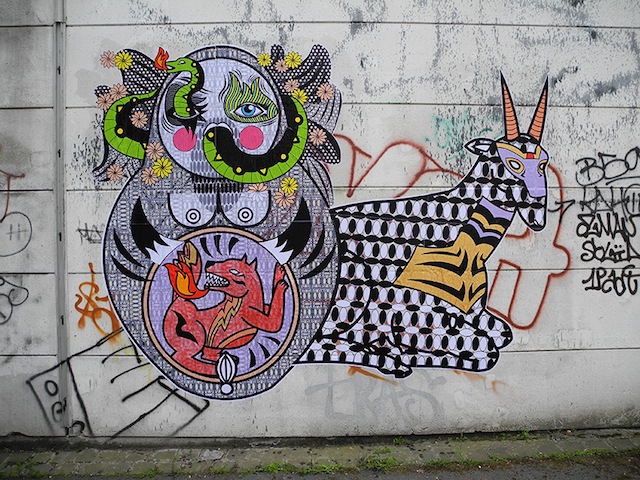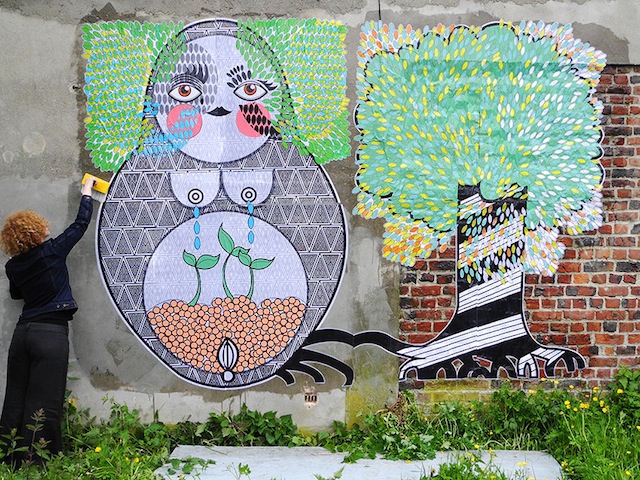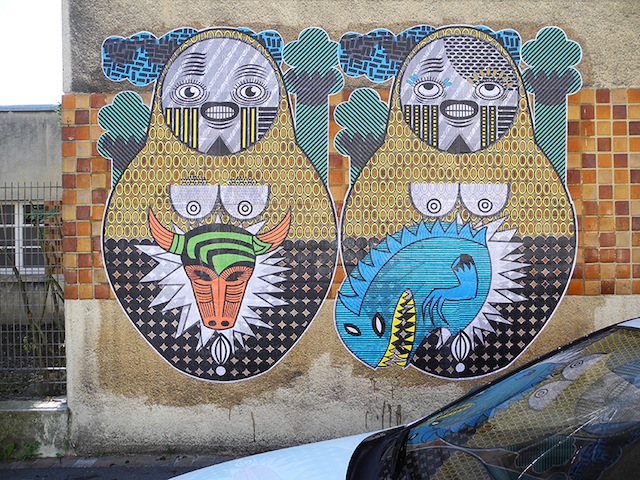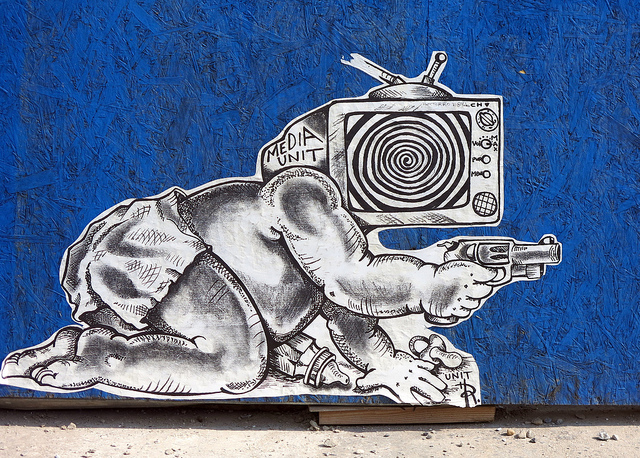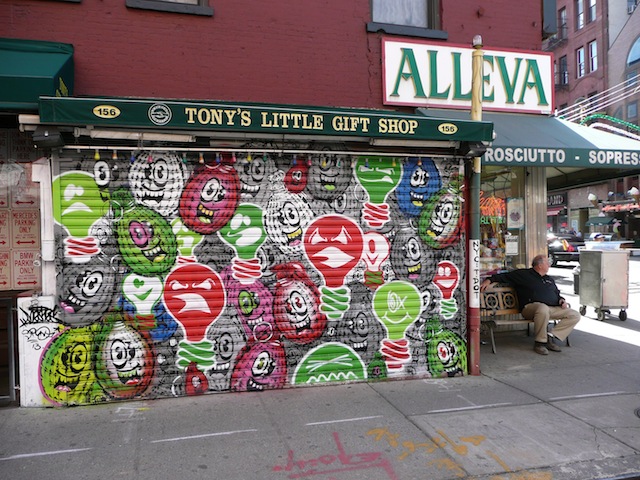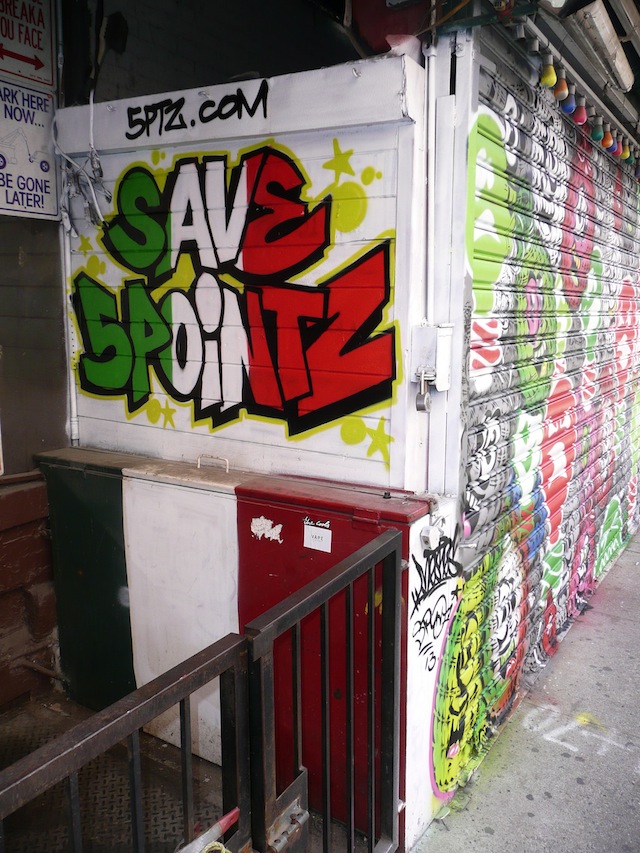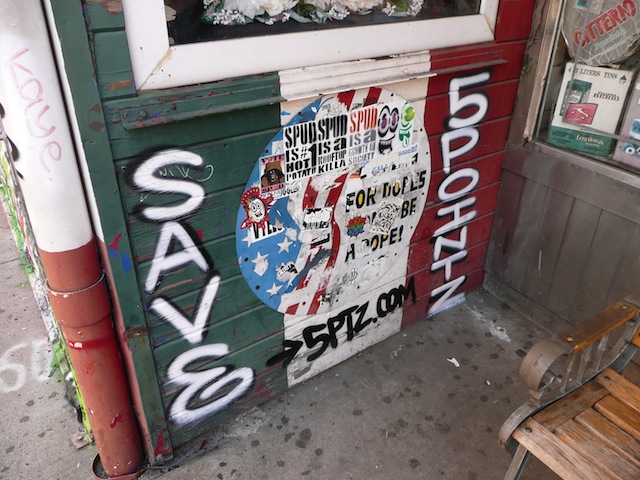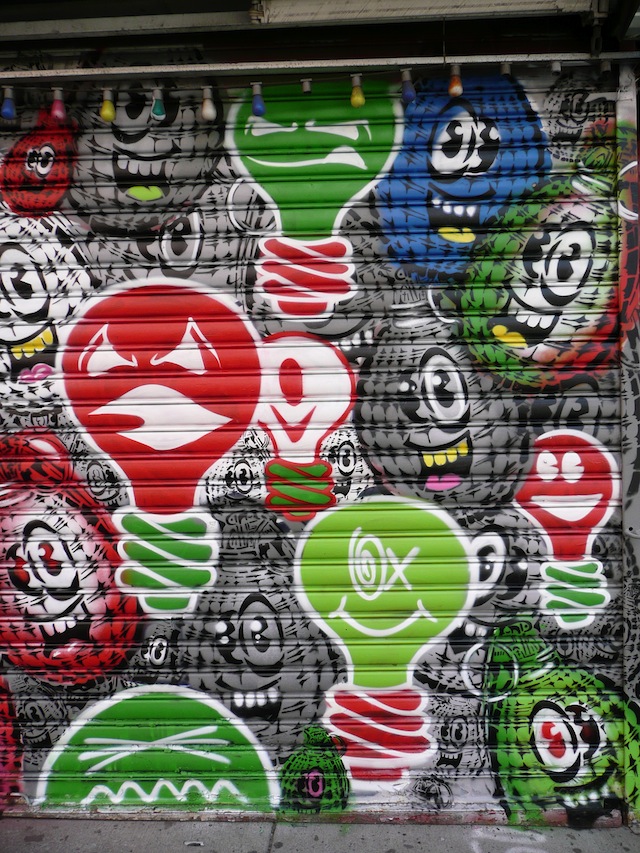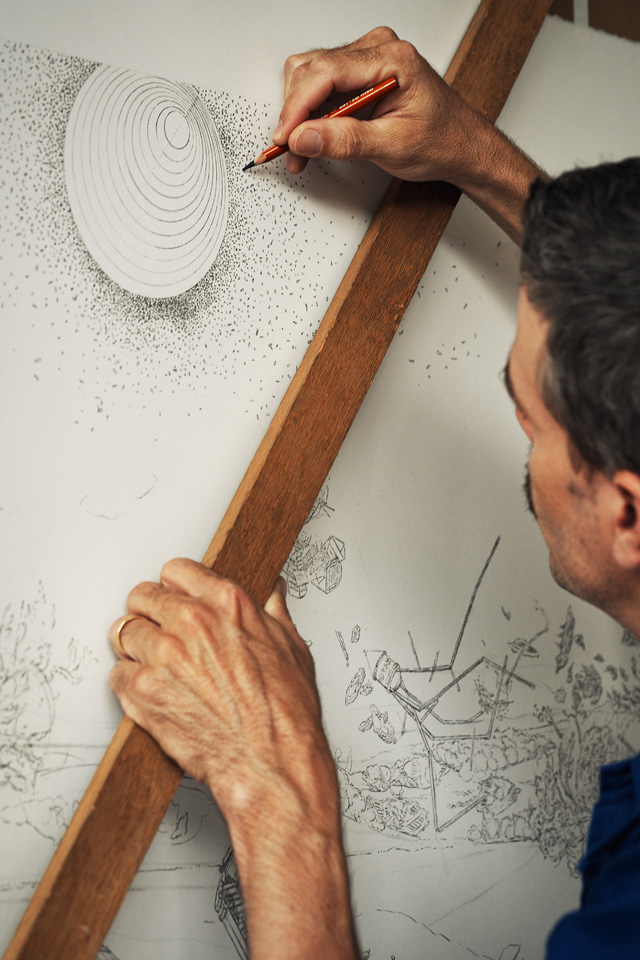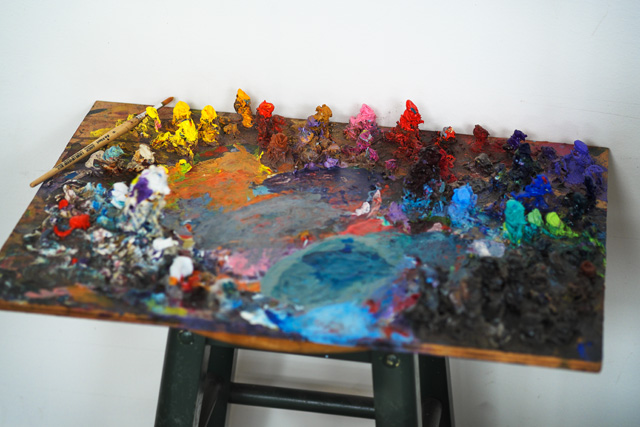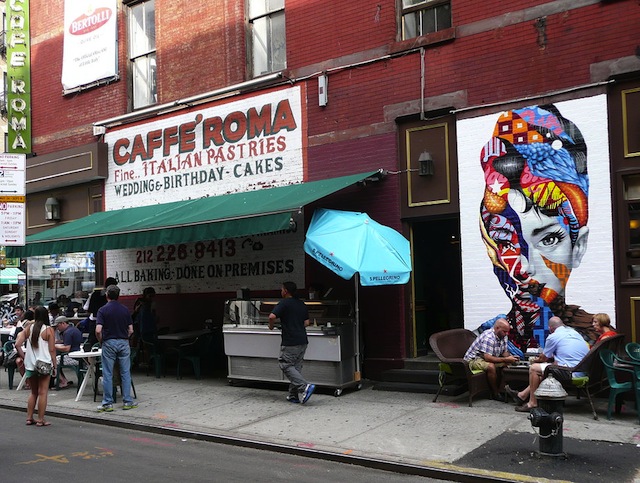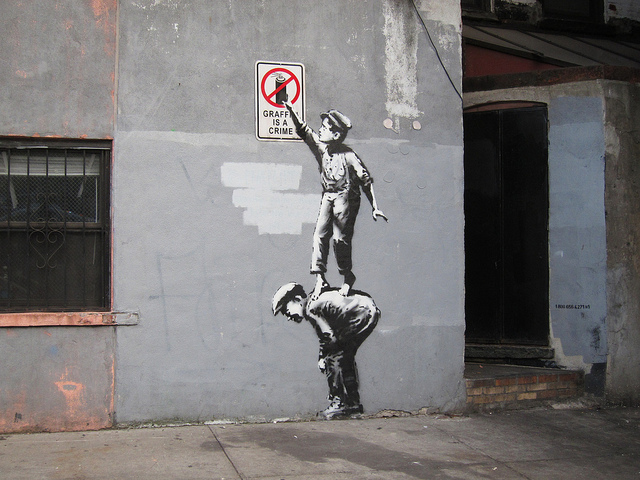
Update (October 2nd, 11am): AnimalNY is reporting that Smart Crew temporarily replaced the sign with one of their own making, but that sign is now gone too and the entire piece has been buffed.
We now have some idea of what Banksy‘s Better Out Than In project is, the project that was hinted at on his website last month. It seems Banksy is putting up work around New York City (not LA as rumors initially suggested) throughout October. The work above is the first piece of Better Out Than In and is located on Allen Street around Chinatown/the Lower East Side. Pretty much everything that’s known about the project is on a new site, Banksyny.com. There’s also an Instagram handle (@banksyny). Looks like we will be getting regular updates from those two sources as to when new pieces go up. The site currently says, “For the next month Banksy will be attempting to host an entire show on the streets of New York.” To make this like (scare quotes) “a real show,” there’s an audio guide of sorts. Note the little stenciled numbers to the right of the piece in the above image. That’s a phone number (1-800-656-4271) that you can call to hear the audio guide (the item number of this piece is, naturally #1). You can also listen to the audio description (at least of this first piece) on banksyny.com.
As Bucky Turco at AnimalNY says, “So to recap: Banksy, a street artist who puts up work in the street–as other street and graffiti artists are wont to do–will be putting up work in the street. Got it.” But that seems to be missing the point, at least the point of where I suspect Banksy may be going with this. Just like The Street Museum of Art is absurd, there is a level of absurdity in Better Out Than In, but I think it’s probably useful absurdity making a point.
It may be the case that Banksy is trying to comment on street artists’ desires to get into museums or paint legal murals rather than work on the street in a guerrilla fashion. Are Banksy’s stencils good? Yes. Are they usually mind-blowingly brilliant? Nah. As Melrose&Fairfax points out, the concept of first stencil of this “show” is similar to work that went up earlier this year in LA last year by Plastic Jesus. If Better Out Than In continues in this vein of the kinds of stencils and public interventions that we have come to expect from Banksy, then I think Better Out Than In may be using those “typical” works to make a larger commentary about Banksy’s work and street art in general. So it’s not really the individual works that will matter but the show as a cohesive whole. Could Better Out Than In be the street art equivalent of institutional critique, really only using the works of street art as props? If so, Banksy may once again outdo himself, a commendable feat when the question among his fans always seems to be “What can Banksy do next? How can he top that last thing?”. Like I say, it’s too early to say with any confidence if this is what Better Out Than In is really about. So far we’ve only seen one piece and gotten a hint at the larger project, so I’m just speculating out loud and tomorrow it could become apparent that I’m completely wrong and have just my head too far up my own ass to see that yet. Maybe Banksy just wanted to make some jokes that didn’t work as stencils or he’s upset that MoMA hasn’t given him a show yet. I guess we’ll find out soon, although with Banksy it seems that hardly anything is ever completely clear.
One of the questions that people seem to be asking about these works is how long they are going to last, given the recent spike in the number of Banksy street pieces that people have sold or are trying to sell. Well, if this first piece is any indication, the works won’t last very long. This first piece has already been damaged. The sign has been removed and some tags have been added. My partners in The L.I.S.A. Project stopped by the wall late Tuesday night and took this photo:
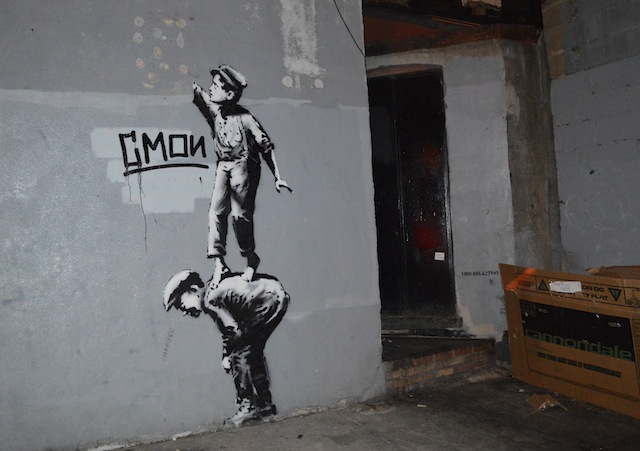
Or, for the gif-lovers out there, I’ve made this:
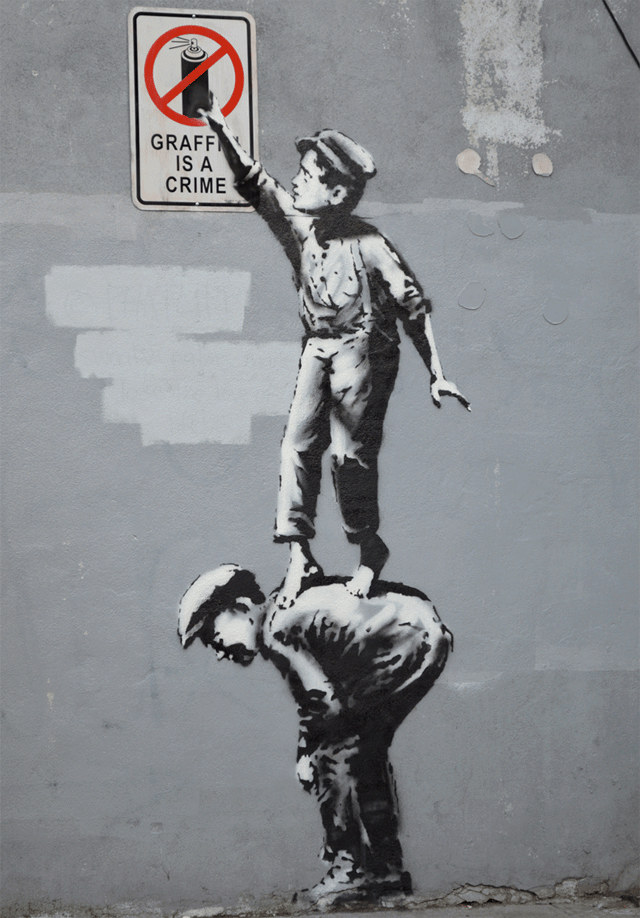
The point is, if you really want to see one of these pieces, it’s probably best to keep a close eye on the project website, the project’s Instagram and other social media channels where the location might be revealed (since it appears Banksy’s sites will only be giving an approximate location) so that you can get to the new work before thieves or people bent on destroying it do.
Speaking of other social media channels. I tweeted a bit this evening that perhaps Banksy had joined Twitter for this project as @banksyny, but pretty soon after that I realized that the account is almost definitely a hoax. Obviously there’s no way to no for sure, but the general rule-of-thumb for confirming anything Banksy-related is to see if it appears on his website. While the @banksyny Instagram account is linked to from banksyny.com (which his official site, banksy.co.uk, currently redirects to), the Twitter account is not. So, I think it’s safe to say that the Twitter account can be assumed to be a hoax. Ironically, right after tweeting about the @banksyny Twitter account and believing that it could be real, I tweeted this about how people shouldn’t report Banksy rumors as fact. So, I screwed up on that one…
My guess it that we won’t be posting updates about every new piece in Better Out Than In or news about the project to this blog. Instead, you’re probably better following Vandalog on Twitter or Facebook for those updates (or of course following Banksy’s own site).
Photos courtesy of The L.I.S.A. Project and by carnagenyc

